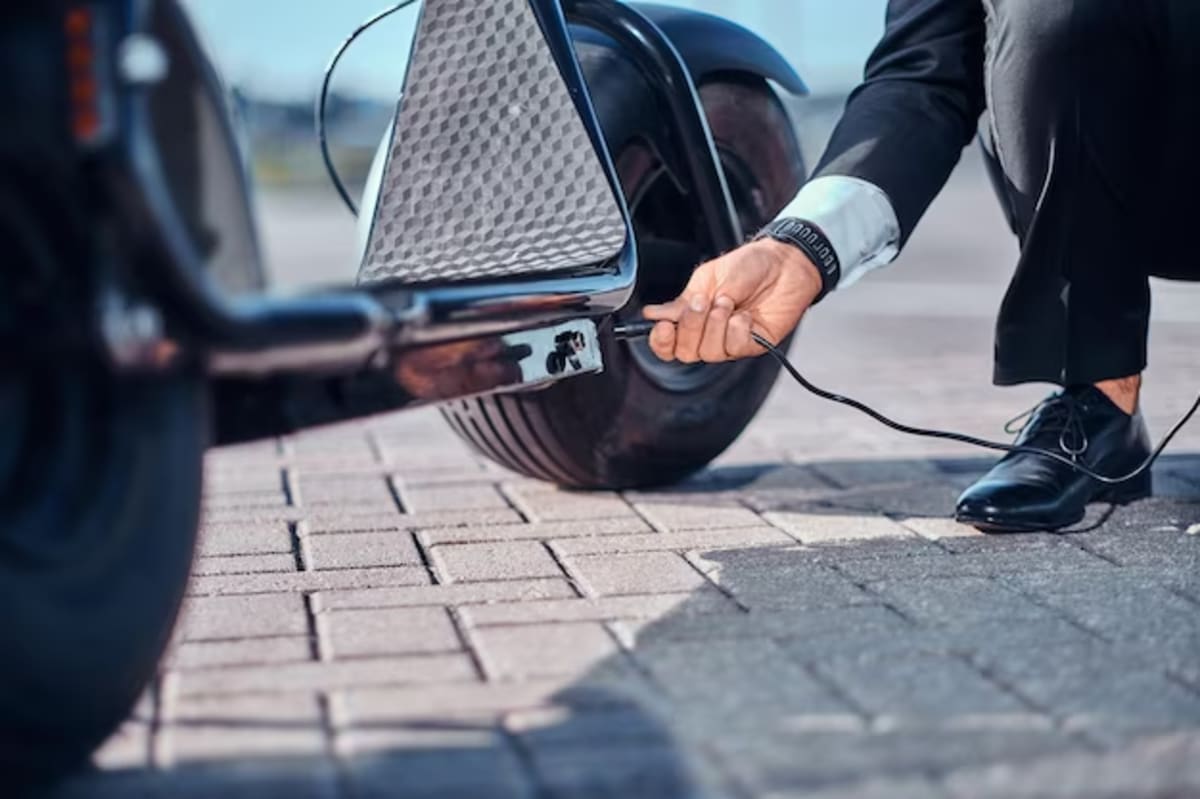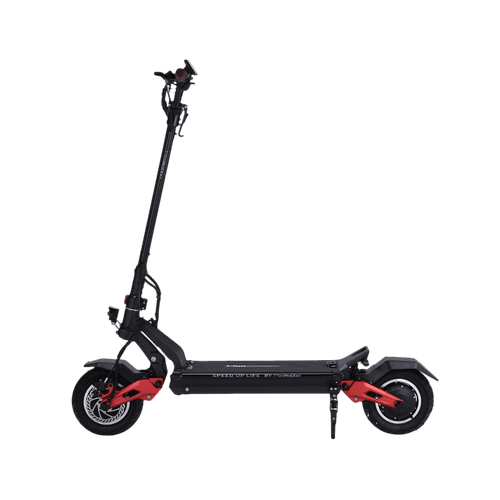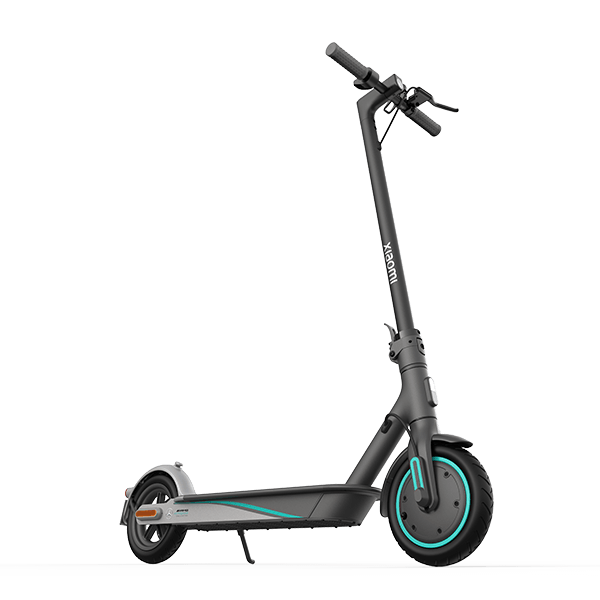Electric Scooter Charging Time: Factors, Tips, and Best Practices
Last updated on: 11/28/2023

Electric scooters have rapidly gained popularity as a convenient and eco-friendly mode of transportation.
With their sleek designs and emission-free operation, electric scooters have become a common sight on city streets and college campuses alike.
However, amidst all the excitement, it's essential to understand a crucial aspect of owning an electric scooter: charging time.
In this article, we'll delve into the factors that affect electric scooter charging time, provide tips to optimize your charging routine, and explore best practices to prolong your electric scooter's battery life.
Factors Affecting Electric Scooter Charging Time
Knowing how long it takes to charge your electric scooter can save you from unexpected delays and ensure that you always have enough power for your rides. Let’s discover the key factors that affect the charging time of your electric scooter.
1. Battery Capacity and Type
The electric scooter battery capacity and type play a significant role in determining the charging time of your electric scooter.
Lithium-ion batteries (aka Li-ion Batteries) are used in most electric scooters due to their high energy density and longer lifespan. Lithium-ion battery is the most efficient battery.
Scooters equipped with larger battery capacities tend to take more time to charge fully compared to those with smaller batteries.
2. Charger Specifications and Compatibility
Using the correct charger and ensuring its compatibility with your electric scooter is crucial for efficient charging.
Different electric scooter models may require specific chargers that provide the optimal voltage and current for effective charging.
Using an incorrect charger or a charger with incompatible specifications can result in longer charging times and potential damage to the battery.
3. Environmental Conditions
The surrounding environmental conditions can affect the charging time of your electric scooter. Extreme hot and cold temperatures can impact the battery's performance and charging efficiency.
Charging your electric scooter in moderate temperatures is recommended for optimal charging speed and battery longevity.
4. Scooter Weight and Load
The weight of the scooter and the load it carries can influence the charging time. Heavier scooters or scooters carrying a significant load may require more energy to charge fully, resulting in longer charging times.
It's important to consider the weight capacity of your electric scooter and distribute the load evenly to maintain an efficient charging process.
How to Calculate the Charging Time? Let’s Find Out!
To calculate the charging time for your electric scooter, you need to consider the battery capacity and the charger's output. Divide the battery capacity (usually measured in watt-hours, Wh) by the charger's output power (measured in watts, W).
The result will give you an estimate of the charging time in hours. Keep in mind that this is a rough estimate, and actual charging times may vary due to factors like battery condition and charging efficiency.
By understanding these factors and how to calculate the charging time, electric scooter owners can plan their rides and ensure that their scooters are always ready to go.
Comparing Electric Scooter Charging Times
When choosing an electric scooter, one of the most important factors to consider is the charging time. After all, you don't want to be stuck waiting for hours for your scooter to charge up before you can go for a ride.
Here is a comparison of the charging times of three top-ranking electric scooters:
1. MW-Tiger 10 Pro+

Max speed: 26 mph
Range: 46 miles
Charging time: 6 hours
Pain points: heavyweight
2. Segway Ninebot Max G30LP

Max speed: 18.6 mph
Range: 25 miles
Charging time: 6.5 hours
Pain points: Smaller battery, lower top speed and range
3. Xiaomi Mi Electric Scooter Pro 2

Max speed: 15.5 mph
Range: 45 miles
Charging time: 8 hours
Pain points: No suspension, not as powerful as other scooters
As you can see, the charging times of these three scooters vary quite a bit. The MW-Tiger 10 Pro+ has the shortest charging time, while the Xiaomi Mi Electric Scooter Pro 2 has the longest. The Segway Ninebot Max G30LP falls somewhere in between.
Factors that Affect Charging Time
There are a few factors that can affect the charging time of an electric scooter, including the size of the electric scooter batteries, the amperage of the electric scooter charger, and the temperature of the environment.
In general, scooters with larger batteries will take longer to charge, and scooters with higher amperage chargers will charge faster. If you're looking for an e-scooter with a quick charging time, the MW-Tiger 10 Pro+ is a good option.
Here are some additional tips for choosing an electric scooter with a prolonged battery life:
Look for a scooter with a large battery. A larger battery will give you a longer range, but it will also take longer to charge.
Consider the amperage of the charger. A higher amperage charger will charge an electric scooter faster.
Choose a scooter with a fast-charging mode. Some electric scooters have a fast-charging mode that can reduce the charging time by up to 50%.
Consider the portability of the charger. If you plan on taking your electric scooter with you on trips, you'll want to choose a scooter with a portable charger.
By following these tips, you can choose an electric scooter with a good charging time that will meet your needs.
Best Practices for Efficient Charging
Here are some best practices:
Developing a charging routine: Create a consistent charging schedule to ensure your electric scooter is always ready when you need it.
Exploring public charging infrastructure and opportunities: Take advantage of available public charging stations or outlets to extend your scooter's range and conveniently charge while on the go.
Considering removable battery options for extended rides: Opt for scooters with removable batteries, allowing you to swap them out for longer rides or when you need extended battery life.
Leveraging smart charging features and technologies: Make use of advanced features like automatic power-off, optimized charging algorithms, and smartphone apps to optimize charging times and preserve battery life.
By incorporating these best practices into your charging routine, you can ensure efficient charging, extended range, and enhanced performance for your electric scooter.
Conclusion
To maximize your electric scooter experience, prioritize efficient charging practices.
By understanding the factors influencing charging time and implementing the provided tips and best practices, you can optimize battery life and ensure your scooter is always ready for your next ride.
Enjoy the convenience and freedom of electric scooters with efficient charging routines.
Join the Newsletter
Wanna hear new articles, flash sales and events delivered to your inbox? Join the Miniwalker newsletter now!